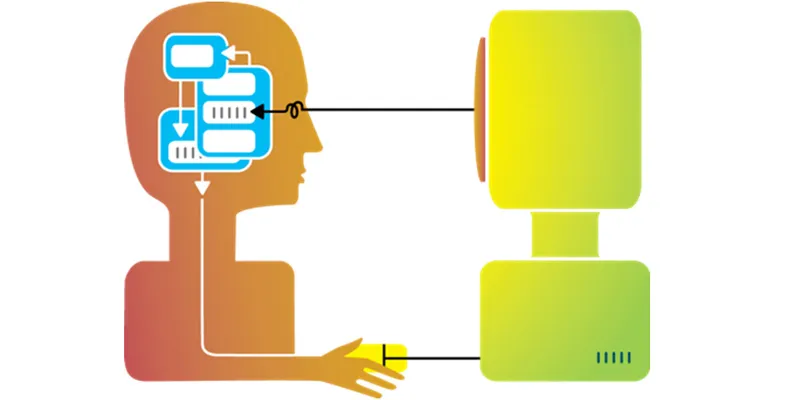
This post is part of a series of articles that are intended to help those who are (or want to be) product owners, entrepreneurs, designers and marketers, and who aspire to create exceptional and engaging products. This particular post discusses mental and conceptual models that bridge psychology and product design. So what do we need to know about these models before creating products?
Mental models

A mental model is the representation that a person has in his mind about the object that he is interacting with. It is the way the person thinks about what he or she is doing. For example, when getting a book from the library, a person forms a mental model of the steps that have to be taken to achieve this. However, not everyone has the same mental model. It is affected by factors such as: (a) past experiences, (b) intuitive perceptions, and (c) incomplete information.
A mental model defines a person’s behaviour. It shapes his or her actions in a particular situation. It defines what people pay attention to, how they approach certain problems and try to solve them, and how they interact with your product. Therefore, research on your target audience is extremely important before you start designing your product.
Conceptual Model

A conceptual model is that which is given to the user through the design and interface of the product. The screen, the buttons, and the interface comprise the conceptual model. You interact with a product via its conceptual model. For example, a conceptual model for an online library is the website that the user interacts with.
Why should you care about mental and conceptual models?

Think about the Facebook ‘like’ feature in comparison to ‘circles’ on Google+ (Google’s social networking platform). How are these two features different? One worked exceptionally well and the other failed miserably. Why?
When we see anything online, the natural tendency is to like or dislike it. It is how our brains are wired. Facebook used this mental model and applied it to posts with a ‘like’ button. It is so perfectly coherent with our mental model – that is, ‘liking’ a post or picture is so intuitive to us that it takes minimal or zero ‘cognitive load’. Hence, the ‘like’ option is one of Facebook’s most liked features.
Now, let’s analyse what did not work for Google+. One of the major problems that Facebook was facing at that time was privacy and the visibility of content on your wall or timeline. While we may have a long list of ‘virtual’ friends, we may not be comfortable sharing all our content with them. Google+ created ‘circles’ to try to solve this problem, but the product’s conceptual model did not align with the users’ mental models. That anyone can add you to his or her ‘circle’ does not happen in real life and it was weird to get a notification that you were suddenly added to someone’s circle. So the privacy problem was not actually solved in a way that was intuitive to the user. Worse, it was hard to learn and use, and thus not accepted or widely adopted.
So what do we observe here? When we create products in which the target audience’s mental models align with their conceptual models (user interface), the product becomes engaging and easy to use. In other words, products that achieve coherence between mental and conceptual models provide what is called an ‘intuitive user experience’. This means that there is minimal cognitive load, i.e. users don’t have to strain their minds to use the product or navigate the website. They just start using it effortlessly.
What if your product is completely new?
Mental models, as mentioned earlier, are created from past experiences, among other factors. But what if users have NOT experienced anything close to what you are creating? This is a great question.
How do we make a child learn how to use a pencil? We show him how to use it, by demonstrating. We talk about its properties like how things written with a pencil can be erased, unlike those written with a pen. Similarly, a user who doesn’t know anything about your completely new product needs to be trained or taught, through demonstrations. In other words, you have to handhold the user until he or she learns.
We also have to make sure that the experience is not annoying or irritating by, first, understanding the users’ mental model and then designing the conceptual model accordingly. So when they finally start using the product, they do it effortlessly and grasp its functionality and usage, intuitively.
So now the distinction between about mental and conceptual models should be clear and how they relate to each other in designing great products. Feel free to email me at [email protected] if you have any questions.
(Disclaimer: The views and opinions expressed in this article are those of the author and do not necessarily reflect the views of YourStory.)







